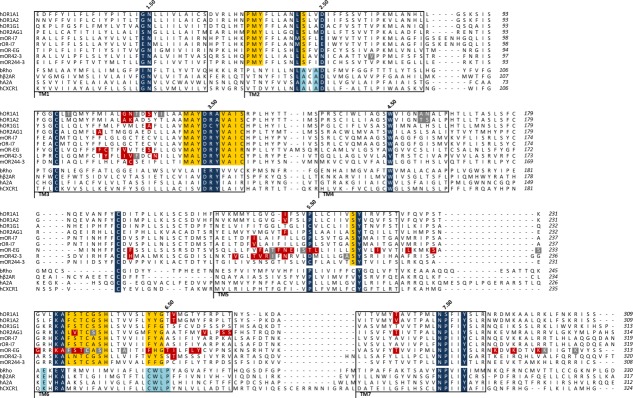Figure 1.

Alignment of ORs with some G protein-coupled receptors (GPCRs). Only ORs for which site-directed mutagenesis combined to molecular modeling was available are considered. Residues commonly conserved between ORs and non-OR GPCRs (dark blue), specific to ORs only (yellow), and specific to non-OR GPCRs only (light blue) are identified. Residues which experimentally modify the OR response upon odorant stimulation are shown in red, while those which do not change the OR response are in gray. Each transmembrane (TM) domain is boxed and the Ballesteros-Weinstein numbering scheme is indicated for Class-A GPCR. An alternative numbering scheme is proposed for the TM5 and TM6 of OR, which takes into account for highly conserved residues within these TMs (orange, italics). Site-directed mutagenesis data are reported for the Human (h) OR1A1 and hOR1A2,6 hOR1G1,7 hOR2AG1,8 Rat (r) and Mouse (m) I7,9 mOR-EG,10,11 mOR42-3,12 and mOR244-3.13 OR sequences are aligned with sequences of Bovine Rhodopsin (bRho), human β2-adrenergic (hβ2AR), human Adenosine-2A (hA2A), and human Chemokine-1 (CXCR1) receptors.
